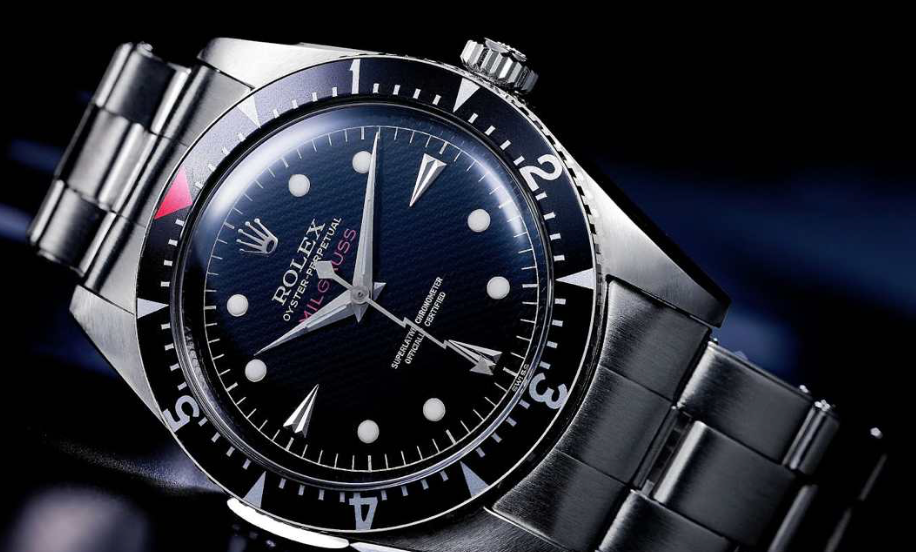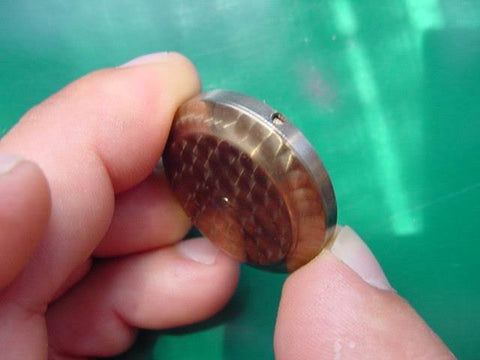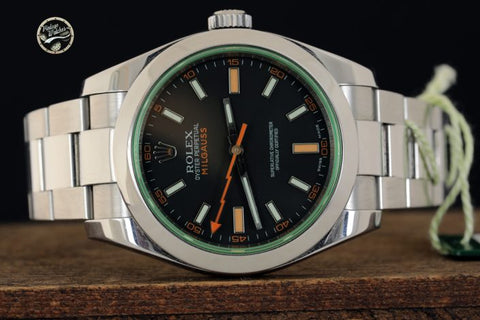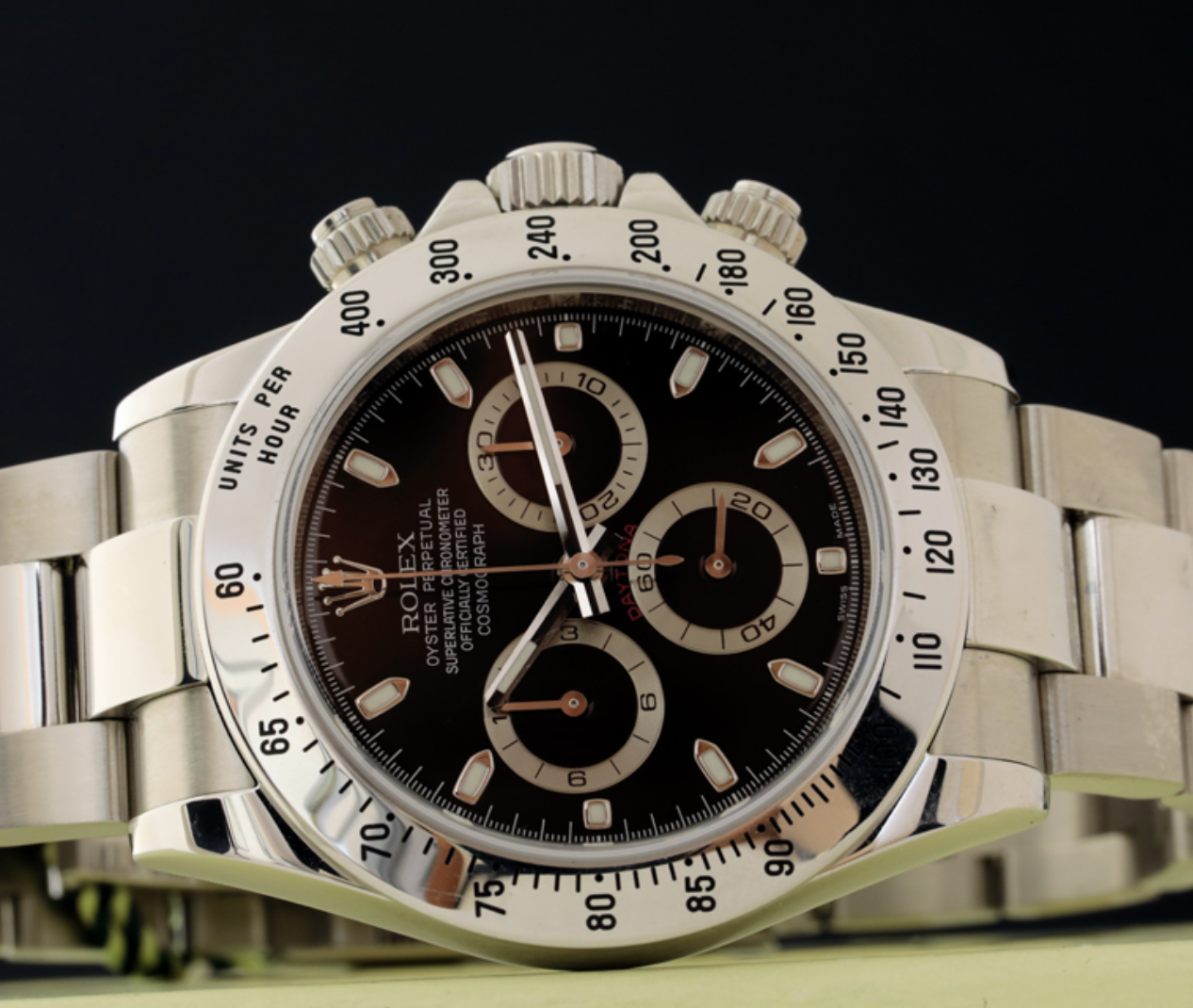
THE MOST FAMOUS LIGHTNING IN WATCHMAKING
It was 1953, the year in which the watchmaking world was about to enter a new dimension, wristwatches begin their journey that will lead them to have the aesthetic characteristics that we still appreciate today in sports models, and it is due to Rolex the beginning of this transformation that starts from the watches that until then "inhabited" the wrists or pockets of those who carried out unusual activities, in contact with dangerous materials, flying over the oceans or inside caves.. Rolex focuses on professional watches designed to assist man in some of his activities and professions that took place in difficult and dangerous environments, eradicates from the wristwatch not only its forms, until then almost always classic and elegant, but together with an robust and sporty, it endows its models with functions and capabilities that no one had ever even been able to imagine.
This is the case of the legendary MILGAUSS, presented in 1954, it was designed for those who worked in environments with the presence of strong magnetic fields, such as research laboratories or power plants, an exposure that would have caused the clock to malfunction, causing it to delay or even speed up.

The name of the watch derives from the union of the two French words "Mille" and "Gauss" where the latter is the unit of measurement of magnetic induction. The Milgauss is in fact able to resist a magnetic exposure of the order of a thousand Gauss. A very high value if we consider that a common clock is subject to inaccuracies if solicited by only 50 Gauss, while at 100 it stops working.
But how was the MILGAUSS born? It is said that at the time, scientists from CERN, the European Organization for Nuclear Research, contacted Rolex directly requesting a watch they could wear safely as they attempted to unravel the secrets of the universe inside the famous high-speed particle accelerator. energy located in Geneva.

Of this there is no certain proof but this story is not so far from that of Pan-Am (and it is also said Alitalia) which asked the Maison for a watch with the possibility of marking two time zones simultaneously. (GMT-Master, read our article related to this topic)
The solution that Rolex came up with in 1954, the same adopted today by many sports watch brands, was achieved through two different technical devices: the adoption for the movement of non- magnetic components for the parts of the same most subject to this problem (balance wheel, spiral, again….); the use of a second internal caseback in soft iron .


The prototype, identified as Ref. 6543, was tested by CERN which found it antimagnetic up to 1,000 gauss, which definitively gave the name Milgauss to this watch. In reality, the technicians pushed the accelerator exposing it up to 5,000 gauss but the movement of the clock still did not lose a second.
The 6543, produced for almost two years in only 150 units, was replaced starting from 1956 with the ref. 6541 (oddly with a lower reference number) with the appearance of the lightning bolt hand. The unusually shaped appearance is one of the most recognizable and desirable characteristics of the original anti-magnetic Rolex , and was highly regarded by the scientific community for which the watch was intended (and is what a large group of aficionados today enjoys, especially even with the latest model).

At the beginning of 1960, the second and last reference arrived, namely the 1019 , available with a silver or black dial and produced until the end of the 1980s. The differences with its predecessor are notable, starting from the movement up to the aesthetics. In this case, the changes are substantial. The rotating bezel disappears, replaced by a simpler stoned truncated cone. And then the dial takes on a more rigorous and modern graphic, presenting large skeletonized baton hands, and very simple applied indexes.
The model with a silver dial was perfect for CERN users. Unlike the black one, it had neither indexes nor luminous hands. Given that the dangerous Radium was used at the time, the emanations of this luminescent substance were incompatible with its use in a scientific laboratory. It is therefore quite natural that these no-lumen Milgauss are also highly sought after today.

In 1988, after realizing that, at a time when professional watches were practically never worn outside the contexts for which they were designed, demand for the Milgauss had practically dropped to zero, Rolex discontinued it.
Surprisingly, the MILGAUSS reappears at Baselworld 2007. The new model features an Oyster case now measuring 40 mm and is forged from the usual 904L steel – the surgical alloy of steel that is difficult to work with but results in shine, strength, and corrosion resistance from primacy, and the arrow hand becomes an indistinguishable orange!

did you like the article?
then you will love the t-shirt inspired by this unique hand!
Here is the MILL, go to the T-SHIRT with PATCHES section to take a closer look!
Until next time!
Luca

PS
a special thanks goes to Stefano Mazzariol, who gave us the opportunity to draw from his photographic archive , if you have not already done so, subscribe to his library, the world's most complete collection of photos, information and curiosities about the world of Rolex and vintage watches in particular.
https://www.mazzariolstefanolibrary.com/it/indice-libreria-principale-demo/
indicate that you are a fan of INCASODIVINTAGE, you will have the possibility to extend the subscription to 18 months at the same price as the 12.



Leave a comment
This site is protected by hCaptcha and the hCaptcha Privacy Policy and Terms of Service apply.